Is the Optolong L-eXtreme narrowband filter the ultimate narrowband filter for DSLR and OSC users who image under heavy light pollution? Let’s find out…
The Optolong L-eXtreme filter has narrow 7nm band passes in the Hydrogen alpha (Ha) and Oxygen III (OIII) lines, unlike the older Optolong L-eNhance, which also has a band pass at the Hydrogen beta (Hb) line. The Optolong L-eXtreme will block out that extra bit of light pollution by omitting the Hb line, while retaining all the detail from emission nebulae by capturing the targets in Ha and OIII.
My Setup
I have been using the Optolong L-eXtreme filter with my Sky-Watcher Evostar 72ED refractor and ZWO ASI533MC Pro OSC camera.
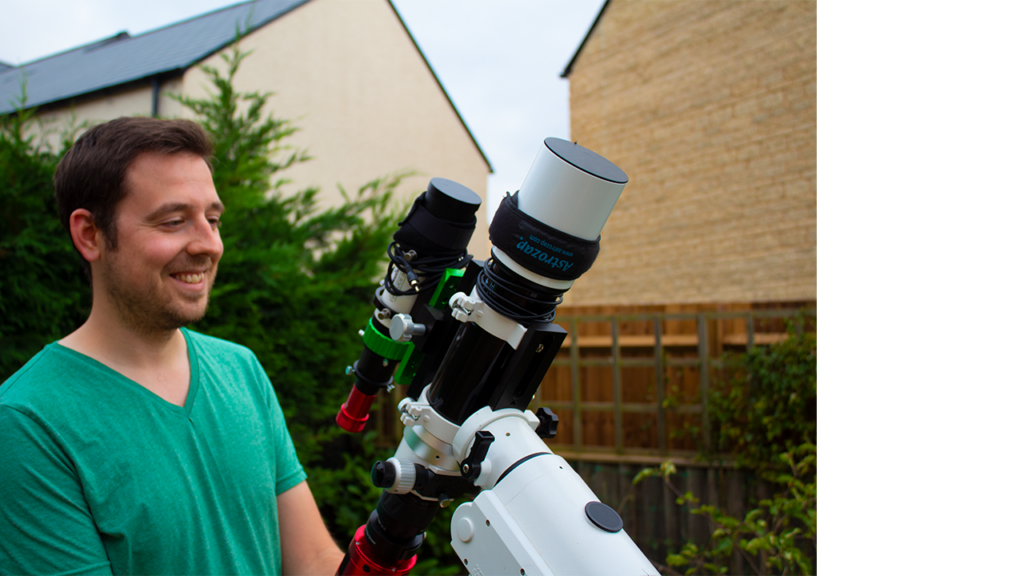
I attached the L-eXtreme to my setup by using the ZWO 2” filter drawer – note that for my particular setup currently, the 1.25” would have been sufficient due to the ZWO ASI533 having a 1” sensor but I opted for the 2” version to future proof my setups when I upgrade the camera or use a full frame DSLR.
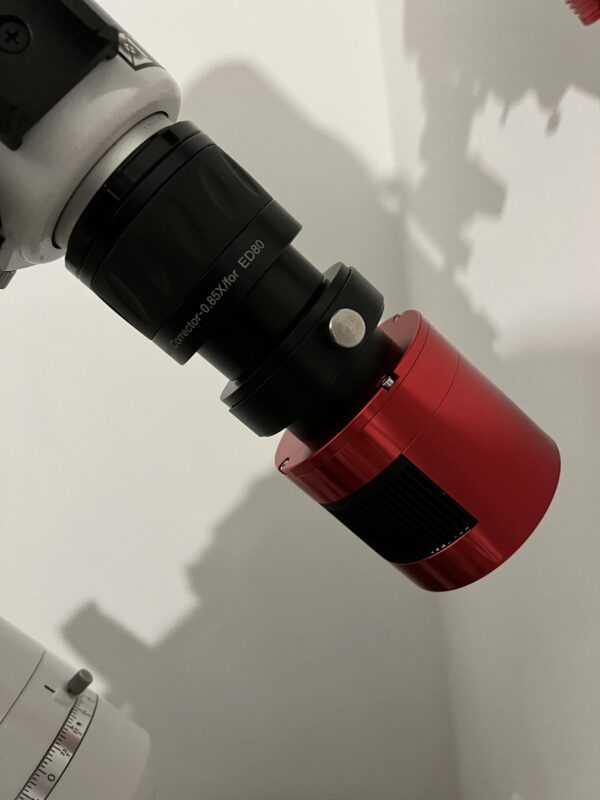
Optolong L-eXtreme Review
Specification
High transmission of H-Alpha, H-Beta and Oxygen III emission lines (avg. 90% or higher)
- Use with colour DSLR, CMOS and CCD Cameras
- 1.25″ or 2″ Mounted & EOS-C Clip-in Filter.
- Sbustrate: B270
- Thickness: 1.85mm
- Tpeak: T>90%
- Blocking range: 300-1000nm
- Blocking depth: light pollution line blocking >99%
- Surface quality: 60/40
- Transmitted Wavefront RMS: λ/4
- Parallelism: 30s
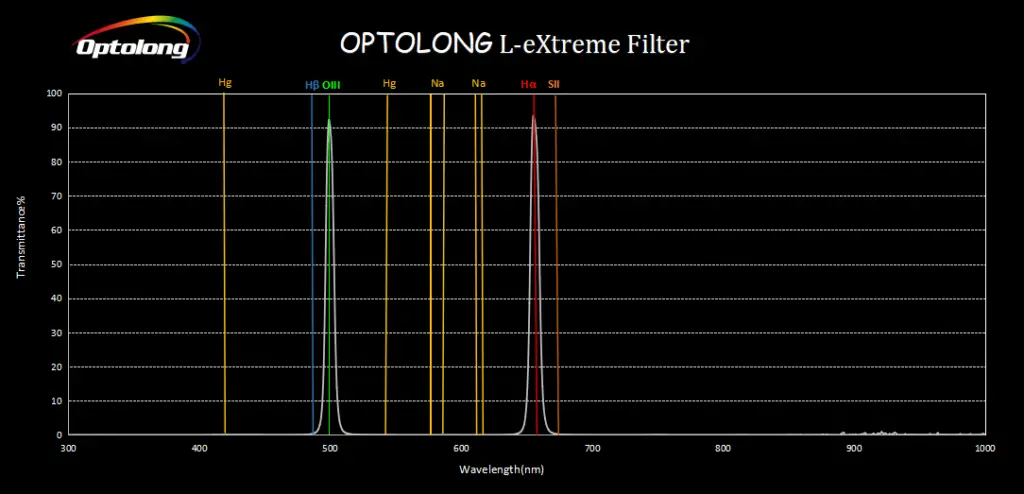
The transmission chart above shows the band passes at OIII and Ha. As you can see, it leaves very little room for light pollution to creep into your astrophotography images, and even makes imaging under a full moon possible. Of course, images will still be better with darker skies but the L-eXtreme makes astrophotography with a colour camera possible under any sky conditions!
L-eXtreme or L-eNhance?
I have used the L-eNhance with my modified DSLR since summer 2019, and I absolutely love that filter. It was the single biggest difference I made to my imaging that year as my images were less noisy by blocking out all that extra light pollution, thus resulting in a much better quality final image.
With the L-eXtreme however I, like many others, have experienced star halos in some of my images. I’ve done a lot of research on the topic but there doesn’t appear to be a truly definitive reason as to why this happens, and it doesn’t happen in all my astro images so I am unsure why this is happening with my particular setup. This is not something I ever experienced with the L-eNhance, though other users of that filter have experienced halos with that filter too. Star halos can be edited out in post-processing, but it’s potentially another thing to deal with that in my opinion shouldn’t be an issue in the first place. There is an example image below of star halos in my North America nebula image.
So which one should you actually buy? Personally, I would go for the L-eXtreme over the L-eNhance, particularly if you are in heavy light pollution. The omission of the Hb line means that your images will be much better quality, capturing only the data that you want from the nebula and not the pesky light pollution in your local area. I think the narrower band pass will benefit the vast majority of users over the L-eNhance, and if you do experience star halos, you can live in comfort knowing that they can be edited out in post-processing.
The L-eXtreme is more expensive than the L-eNhance, but not by much. Astrophotography is a notoriously expensive hobby and I don’t think the extra £80 is worth arguing over, especially as the L-eXtreme will add a better contrast to your final images.
Other Filters to Consider
- Optolong L-eNhance – Already mentioned in this review, but I also have a full review of the Optolong L-eNhance here.
- Askar Duo-Band Narrowband filter
- ZWO Duo-Band Narrowband filter
- Altair Dual-Band Narrowband filter
I only have experience using the Optolong L-eNhance and L-eXtreme so I cannot comment on the others from personal experience, but there are other reviews out there and lots of information on forums for you to make an informed decision on which is the best filter for you. I would be surprised if any are better than the L-eXtreme, but I am sure there are some of equal quality out there.
My Video Review on YouTube
Example Images
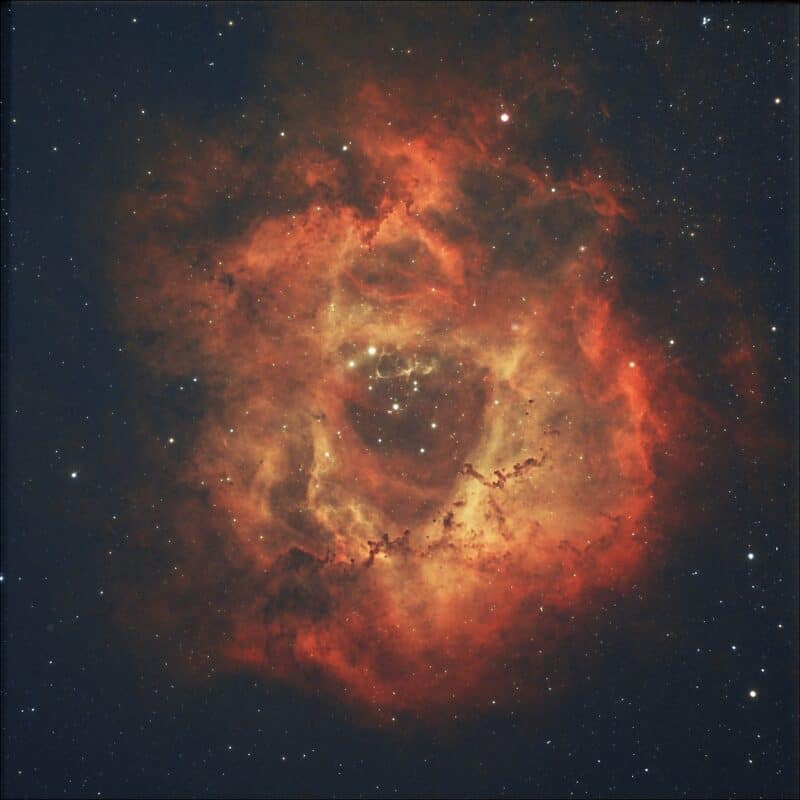
NGC2244 Rosette Nebula
Acquisition Details:
- 75x 5 minute subs
- Calibrated with Darks and Flats
- Stacked in DeepSkyStacker
- Processed in Pixinsight

Acquisition Details:
- 22x 10 minute subs
- Calibrated with Darks and Flats
- Stacked in DeepSkyStacker
- Processed in Adobe Photoshop
These first 2 images had long exposures, 5 & 10 minutes respectively and a longer total integration time, but the Optolong L-eXtreme is so good that you don’t need a huge amount of integration time to pull out some great detail in your images, though of course it’s always advised to get as much time on a target as possible. See the examples below.

Acquisition Details:
- 30x 3 minute subs
- Calibrated with Darks and Flats
- Stacked in DeepSkyStacker
- Processed in Adobe Photoshop
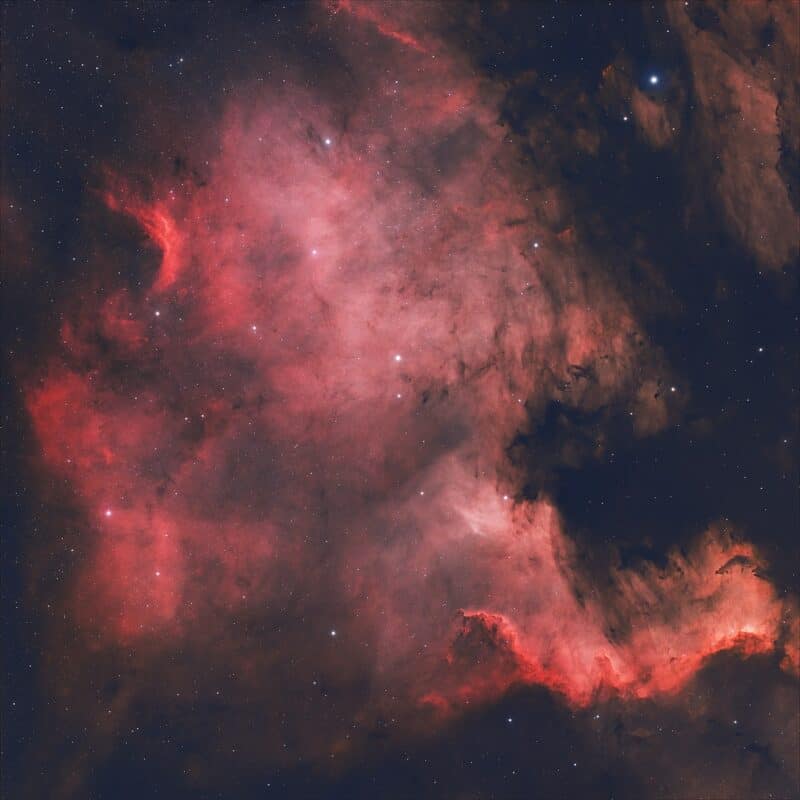
North America Nebula NGC7000
Acquisition Details:
- 30x 2 minute subs
- Calibrated with Darks and Flats
- Stacked in DeepSkyStacker
- Processed in Adobe Photoshop
Star Halos
If you look closely at the North America nebula image below, you can see that some of the brighter stars have the halos that I mentioned previously. I left the star halos in for the purposes of this review so that you can see an example from one of my images.
It’s frustrating to look at, but it hasn’t put me off giving this filter a positive review, but that may be different for you and you may wish to explore other options. As stated above, they can be edited out but it’s just another thing to deal with in your stacked images that can cause frustration. Below I have zoomed in so you can get a better look at the haloing.
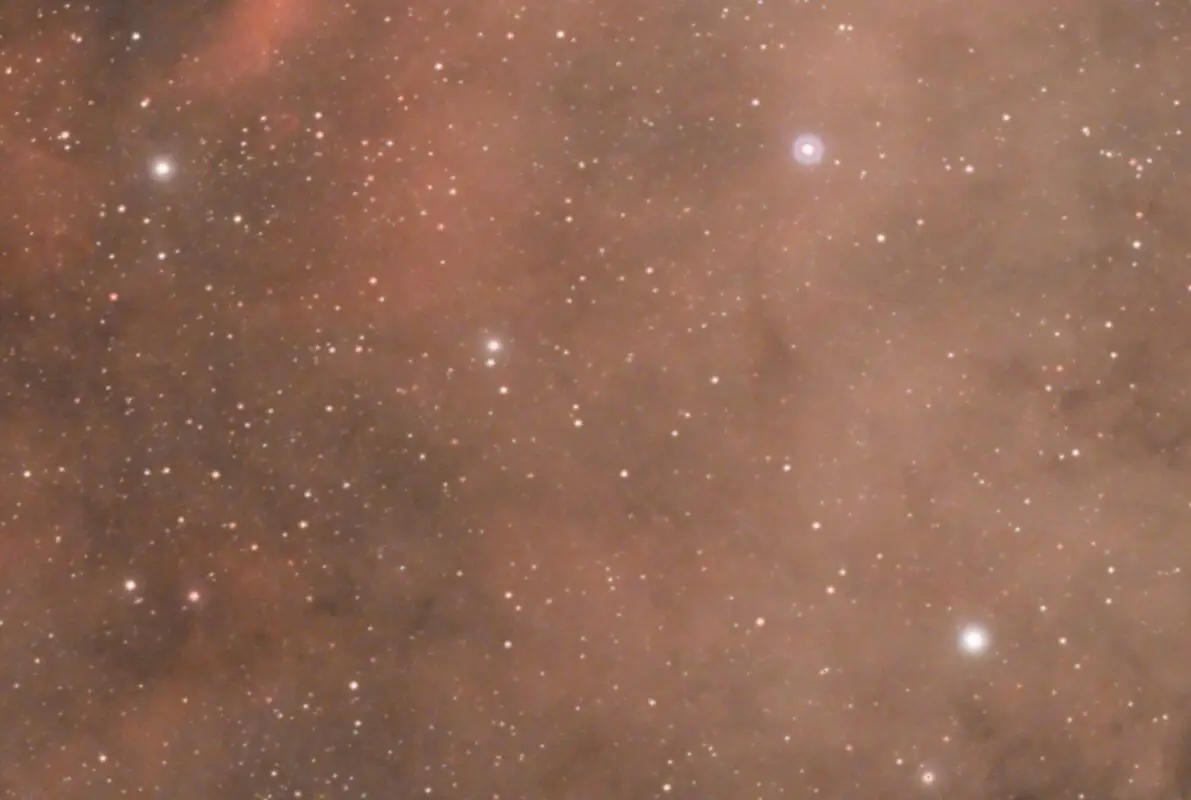
False Hubble Palette Images
SHO images don’t have to be reserved for those with SHO filters using a mono camera. Using a duo narrowband filter like the Optolong L-eXtreme, you can extract the individual channel data and then combine to create a false hubble palette. There are plenty of tutorials online showing how this is done. I will add more to this section as I learn Pixinsight in more detail.
Final Thoughts
My closing thoughts on this filter are as follows:
Pros:
- Narrow band passes (7nm) at Ha and OIII, blocking out light pollution
- Perfect solution for heavily light polluted backyards wanting to image nebulae
- You can get good images with less data
- Extract individual channels in Pixinsight to create false SHO images
- Use during full moon
- Improvement on the previous L-eNhance
Cons:
- Star halos – see above
- Star colors often come out green and require a colour balance in post-processing
- Focusing can be more of a challenge due to the narrow band passes
The Optolong L-eXtreme is a perfect solution for all astrophotographers using a DSLR, mirrorless or OSC camera. When are you getting yours?
